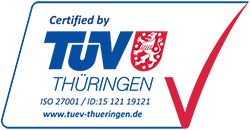Check .lt domain
What are the parties and third parties in the case regarding .lt second level domain name?
The person who thinks that his / her prior rights are violated can be the claimant in the discussed cases. For example, the trademark owner – in the cases regarding the subsequent use of the previously registered label in the domain name; legal entity – in the cases regarding the subsequent use of its name in the domain name; domain holder – in the cases regarding the subsequent use of the domain name as trademark or name of the legal entity.
In the cases regarding the subsequent use of the protected label in the domain name, the requirements of the claim have to be submitted for the domain holder who has composed and / or uses the disputed domain name. The domain holder is a direct subject of the legal relationship related to the alleged violation of the claimant’s civil rights and bears responsibility for his / her domain name. Therefore, the defendant cannot be a contact person, servicing registrar, .lt registry and other persons, because they do not manage the disputable domain and are not responsible for its name.
All .lt second level domain holders are identified in .lt WHOIS database. The data of the natural persons is not published, but a possibility is provided to forward an email to the domain holder (more information is available in “How to settle the disputes regarding .lt second level domain name”).
.lt WHOIS database contains no entries of the second level domains created in other top-level domains, but it does not deny the existence of such domains. There were misunderstanding in practice in this regard, for example, the fact of the absence of .com second level domain in .lt WHOIS database was considered a proof that such domain does not exist in the civil proceedings No. 2-116-623 / 2009 processed by Vilnius Regional Court. Each top-level domain has its own WHOIS database that contains the entries of the respective second level domain.
The principle of fairness (paragraph 7.1.2 of the procedural regulation for the .lt top-level domain) means that .lt registry is not personally interested in the allocation of the domain names to one or the other person; therefore the registry would not be on the claimant’s or the defendant’s side in the case. It is a precondition for the participation in the case as the third party without individual requirements. Therefore, .lt registry is not included in the case as the claimant (the registry is not the participant in the dispute relationship) or the third party (the registry is not interested in the outcome of the case). Otherwise, if the top-level domain registry is included as the third party in each domain name dispute case, for example, civil case No. 2-3405-275 / 2013 processed by Vilnius Regional Court (regarding the domain names balticmodel.lt, balticmodel.lv, balticmodels.lt, balticmodels.lv, balticmodels.ee and balticmodels.net) would be distinguished by the fact that even four – .lt, .lv, .ee and .net – top-level domain registries would be the third parties in the case, which would not be reasonable. Therefore, Vilnius Regional Court reasonably refused to include .lt registry and previous holder of the disputable domain as the third parties without individual requirements in the civil proceedings No. e2-5327-585 / 2015.
The assumption that outcome of the case may influence the rights and obligations of the registrar is reasonable, because upholding of the claim would mean termination of the service contract between the domain holder and the servicing registrar. With the disappearance of the object of the contract (domain holder losing the rights to the disputable domain which is an object of the signed service contract), the servicing registrar cannot perform the contractual obligations, i.e., provide procedural and related technical services, simultaneously losing the right to remuneration. Therefore, the servicing registrar can be included in the case as the third party without individual requirements.



